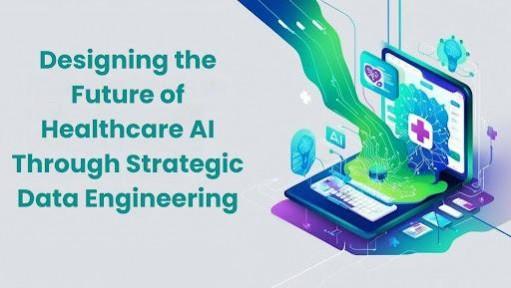
In this modern era, Venkat Mounish Gundla, a specialist at the intersection of artificial intelligence and healthcare systems, delivers a beginner's guide that lifts the veil on the critical yet often overlooked world of healthcare data engineering. With a solid foundation in advanced data technologies, he breaks down the elements that make AI in healthcare not only possible but also impactful.
Reconstructing Healthcare's Digital Backbone
The journey toward AI enhanced healthcare starts not with algorithms but with data, vast, varied, and often unwieldy. The healthcare sector operates with an overwhelming volume of information that grows at over 60% annually. Hospitals typically juggle data from 18 different systems, encompassing structured, semi structured, and unstructured formats. Without a resilient data infrastructure, even the most sophisticated AI systems are rendered ineffective. Data engineering provides this critical foundation by standardizing, integrating, and delivering reliable data at the scale needed for modern medical innovation.
The Invisible Engine Behind Predictive Power
One of the most profound insights from his analysis is the interdependence between data quality and AI model performance. The so-called "garbage in, garbage out" effect is no cliché in this context: over 80% of AI model failures in healthcare can be traced back to poor data quality. Increasing data completeness, consistency, and relevance by just 5% can result in nearly a 10% improvement in AI performance. In real terms, this equates to sepsis prediction models offering life saving warnings hours before symptoms manifest, driven entirely by the quality of the underlying data.
Architecting Intelligence From Data Silos to Multimodal Systems
The architecture that underpins healthcare data systems has rapidly evolved. Traditional silos gave way to data warehouses, which then transformed into data meshes. Today, multimodal AI embedded platforms define the cutting edge, enabling real time analytics and the processing of both structured and unstructured data. These systems not only reduce latency and maintenance costs but also expand the boundaries of what is computationally possible in clinical settings, from genome analysis to population health forecasting.
Regulatory Rigor Meets Technical Ingenuity
Unlike other industries, healthcare data engineering must navigate stringent regulatory terrain. From ensuring HIPAA compliance to managing consent for data usage, the systems involved must support over 20 technical safeguards and track numerous patient specific permission layers. Anonymization techniques now reduce re-identification risks to negligible levels without compromising analytical value. These safeguards are not just legal necessities but critical components of trustworthy AI systems.
Engineering for Equity and Efficiency
He highlights the tangible benefits of robust data engineering for operational and financial performance. Hospitals that invest adequately in their data infrastructure see vast improvements: shorter wait times, fewer errors, and dramatically better utilization of resources. Financially, these investments yield high returns, reducing waste, increasing reimbursements, and accelerating collections. In fact, institutions that commit more than 20% of their IT budget to data engineering report over threefold improvements in both ROI and operational efficiency.
From Technical Fix to Strategic Edge
Beyond the direct improvements in efficiency and accuracy, data engineering now serves as a strategic differentiator. Organizations with advanced data systems develop and deploy AI applications up to four times faster, gain in market share, and benefit from better staff retention and patient satisfaction. These downstream effects signal a broader transformation: healthcare providers are becoming data driven institutions where strategic decisions are informed by high quality, real time insights.
In conclusion, Venkat Mounish Gundla emphasizes that data engineering is the foundation of effective AI in healthcare. Prioritizing data quality, architecture, and governance enables accurate insights, better outcomes, and strategic growth. Healthcare's digital future hinges not on algorithms alone but on the strength and integrity of its data infrastructure.









